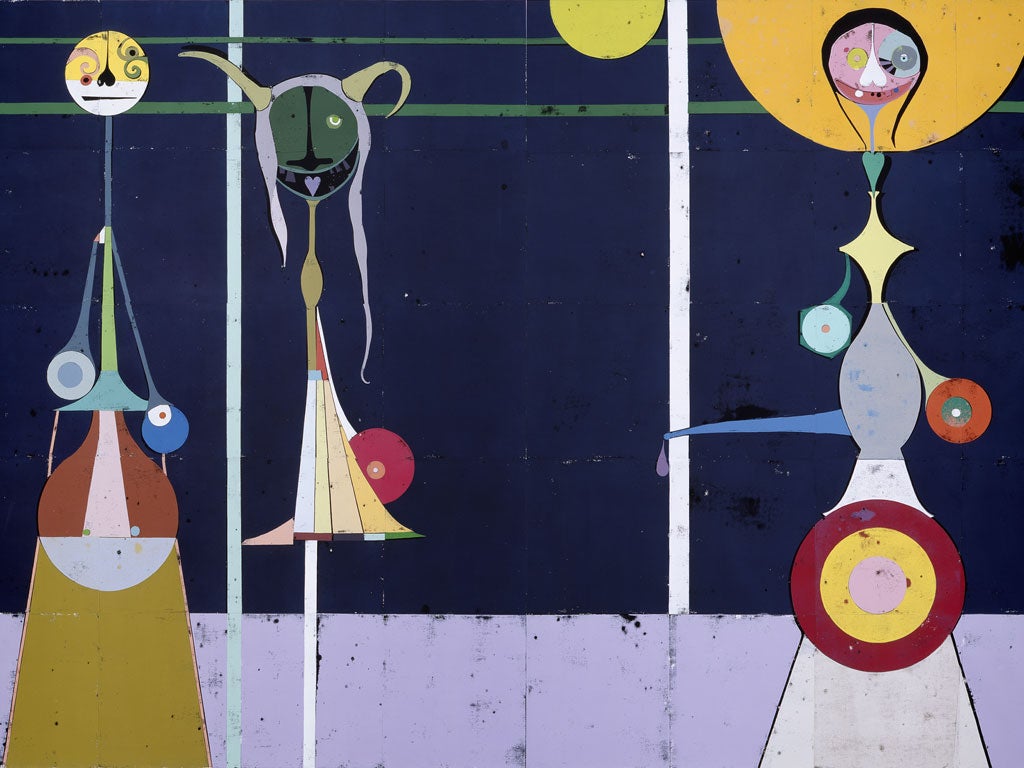Gesamtkunstwerk: New Art from Germany, Saatchi Gallery, London
Too few gems from the junk-lovers

Your support helps us to tell the story
From reproductive rights to climate change to Big Tech, The Independent is on the ground when the story is developing. Whether it's investigating the financials of Elon Musk's pro-Trump PAC or producing our latest documentary, 'The A Word', which shines a light on the American women fighting for reproductive rights, we know how important it is to parse out the facts from the messaging.
At such a critical moment in US history, we need reporters on the ground. Your donation allows us to keep sending journalists to speak to both sides of the story.
The Independent is trusted by Americans across the entire political spectrum. And unlike many other quality news outlets, we choose not to lock Americans out of our reporting and analysis with paywalls. We believe quality journalism should be available to everyone, paid for by those who can afford it.
Your support makes all the difference.This is a zip through an entire generation of younger (yes, more younger than young) German artists – 24 participants are generously spread across 14 substantial galleries. What does it tell us about German art now? There's a certain coolness about this entire show. German artists stand back from their art-making with a tiny smirk of knowingness on their faces. They have absorbed quite as much as needs to be absorbed about the past, whether it be distant or more recent, and their practice, by and large, consists of a kind of clever, extended commentary upon that which has gone before. Generally speaking, they are not afraid to talk politics or to mess with the issues of the day. Above all, they adore junk, and they dislike too much refinement.
Time and again in this show, we find ourselves looking at works that are assembled from bits and pieces of just about anything whatsoever – cans, concrete, plastic bags. Non-art stuff is the stuff of art. In fact, they are not only are assembled from junk. They are assembled in self-consciously gawky, clumsy ways too, as if to emphasise that fact. There is no refining away the junk here. German artists are positively reverential about the humdrum, the cast-aside. They want to tell us: our art is on the side of the ordinary things of life. It is not set apart as if it were a kind of superior form of dialogue between self and soul to which you will be admitted after close interrogation of your cultural credentials.
Isa Genzken, who enjoyed a solo show at the Whitechapel Gallery after its recent refurbishment, is fairly typical of what is going on. There is something crazily rackety about her sculptural assemblages. Assemblages? More wacky agglomerations than assemblages. They are brash. They are bright. They are noisy. They barely hang together at all.
Georg Herold is among the most interesting here. He makes extraordinarily elongated, curiously wrenched human figures, stretched along unusually long plinths – we think of Lehmbruck when we first look at them, but there is nothing of the heroic or the monumental about Herold's work. This is art that self-consciously plays with ideas of the heroic. Once again, these works look rackety, roughly assembled – we see how the parts are stitched together. Their colours shriek at us. There is almost no sense of the sacred here. Art is what you knock it up from.
To 30 April (020 7811 3070)
Join our commenting forum
Join thought-provoking conversations, follow other Independent readers and see their replies
Comments